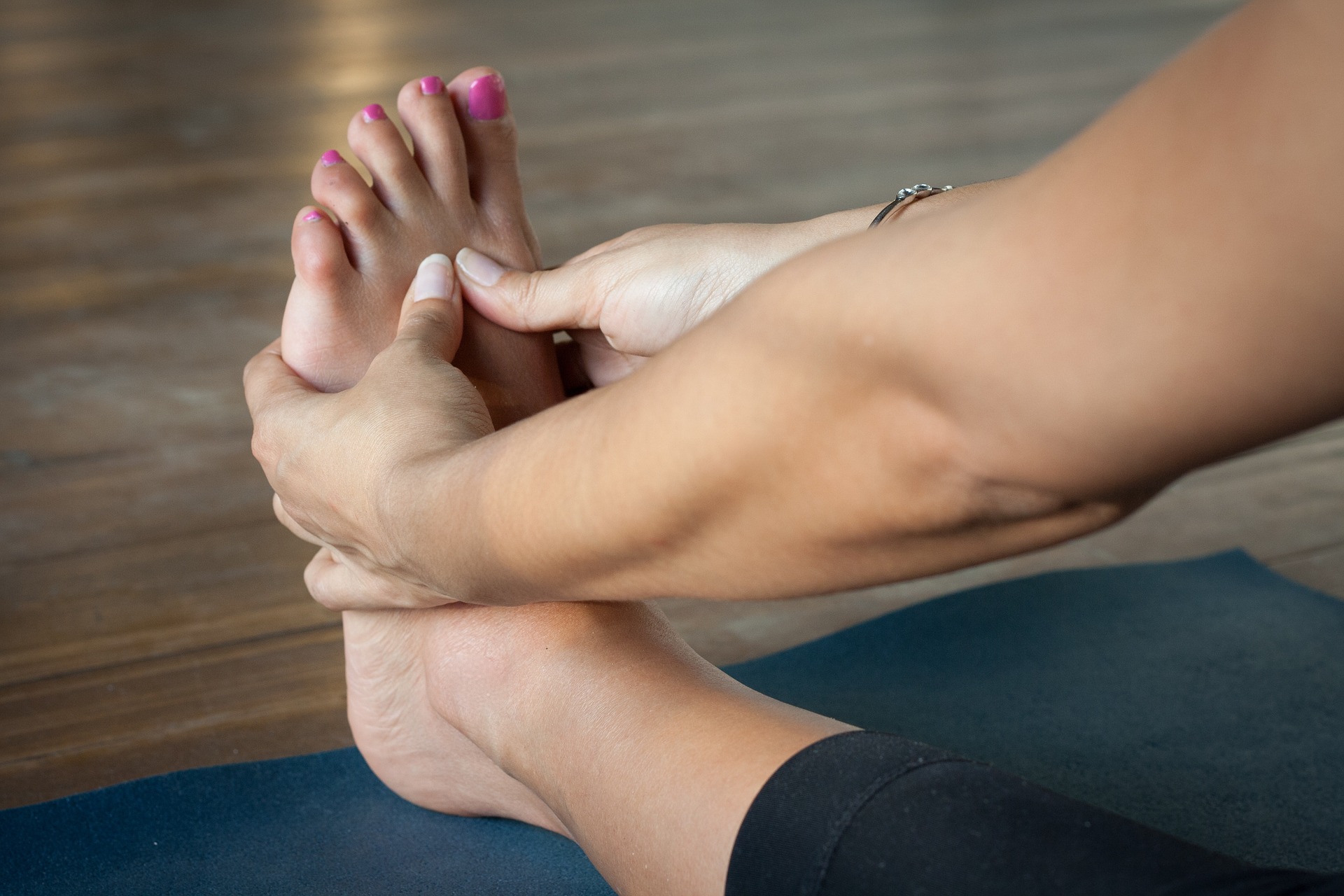Plantar fasciitis is a common overuse/repetitive strain injury, like carpal tunnel syndrome or tennis elbow in your foot. It’s an inflammatory thickening and/or degeneration of the plantar fascia. It’s especially common in runners, walkers, hikers and anyone who stands while they work. Risk factors include those working or running on hard surfaces such as concrete and pavement, overtraining, old age, excessive foot pronation, being overweight and poor form when working out.
It’s technically characterized as a degenerative change in the foot’s fascia tissue. This tissue helps support the arches of the feet, absorbs shock and pressure and bears the weight of your entire body. The fascia is thick, elastic and connect the heel bones to the toes and creates the arch of the foot. When your feet are overused, the fascia may tear or become inflamed and cause you pain.
Nearly 10 percent of the adult population suffers from plantar fasciitis – accounting for an average of one million physician visits per year. Plantar fasciitis is caused by inflammation of the thick fascia tissues of the heels. It’s usually triggered due to overuse of the feet. It can affect one heel at a time (usually in the dominant foot) or both heels at once.
What Are Symptoms of Plantars Fasciitis?
• Mainly pain in the arch of the foot and/or heel.
• A common symptom is foot pain in the morning.
• Pain that worsens after carrying heavy objects or exercising.
• Swelling and tenderness in the foot
• Tenderness and sometimes swelling throughout the feet
• Unable to complete everyday tasks without pain such as walking
• Reduced pain when resting for a long period of time.
Managing the pain from plantar fasciitis can feel like a full-time job, but many simple effective treatments can be done while you’re on the job or during a break. These methods will leave your heels and arches feeling great.
- Get a Ball or Water Bottle
Grab a golf ball or frozen water bottle and use it to massage your feet during the day. Simply roll the bottom of your foot over the ball or water bottle while applying pressure. The pressure of the massage sends blood flow to the arch and heel and breaks down the painful tears on the plantar fascia ligament. - Grab an Ice Pack
Icing is a great way to reduce heel pain. Use frozen vegetables, or Ice Pack Slippers – or freeze a Dixie cup with ice and rub it right where you need relief for a few minutes. - Stretch
Stretching is one of the most effective ways to reduce the pain from plantar fasciitis. Stretching will improve flexibility, strength and stretch the ligament itself. Here are a few stretches you can try:
• Pull on both ends of a towel that you place under the ball of your foot. Move your foot and the towel around to help massage the affected tissue.
• Cross your affected leg over your other leg and take hold of your affected foot. Pull your toes back towards your shin. Hold for 10 seconds and do 10 repetitions.
• Try rubbing your thumb left to right over the arch of the painful foot. As healing improves, the tissue will become firm like a guitar string.
• Spread your feet apart and lean forward with one foot in front of the other. Flex your knees, squat down and keep your heels on the ground as long as possible. Hold for 10 seconds and do 20 repetitions.
• Place one leg behind your other with the toes of your back foot pointed towards the heel of your other foot. Lean against a wall and bend your front knee while keeping your back leg straight. Keep your back heel firmly on the ground and stretch it for 10 seconds at a time, up to 10 times daily. Repeat with the other leg. - TENs Therapy
Trans Cutaneous Electrical Nerve Stimulation, or TENS therapy, helps stimulates the nerves in the foot with small doses of electrical current as well as helps reduce inflammation and stiffness. It improves blood flow and interrupt the body’s signals for pain. - Lift a Towel
Sit on a chair and put a small towel on the floor in front of your feel. Then, using your toes, attempt to lift the towel with your toes and pull it under your foot. Repeat this with both feet several times. This will help strengthen and build the weakened muscles in the feet. - Rest
The best remedy for treating plantar fasciitis is resting. Take time off from the repetitive movements that trigger the condition and increase pain. We’re not talking about a few days, most likely you’ll need several weeks off to allow the tissue to heal. You can do other low-impact sports such as swimming that don’t cause pain while you’re resting your feet. While you’re resting – ice and elevate! - Wear Supportive Shoes
The shoes you wear during your running, walking or standing can really impact whether you get plantar fasciitis. It’s usually a good idea to go to a sporting goods store to have a trained employee measure your feed to help you find the best shoe for your foot and activity. If you’re a runner, you should be buying new shoes after every 300-500 miles. High heels, walking barefoot and sandals are all bad for your feet and can cause plantar fasciitis.
If you are stuck wearing shoes that are not recommended, you could consider wearing specialized orthotics or heel cups in your shoes or a splint while you sleep. - NSAIDs (Non-Steroidal Anti-Inflammatory)
You might be able to see some benefits from over the counter anti-inflammatory meds such as Tylenol and Advil. - Cortisone Injections
Cortisone injections are a common method used to decrease the pain. I would only try this if no other methods work first. This injection has to be performed by a doctor and results typically last a few weeks, at least giving your foot time to fully heal. - Physical Therapy
This is another method if you don’t respond to at-home treatments. Physical therapy may help cut down on the pain. A physician can help you determine how much and what kind of physical therapy to do. - Surgery
Surgery is a last resort and is normally only suitable for chronic, long-lasting, debilitating plantar fasciitis pain. Surgery may not be a guaranteed fix. Speak to a physician about your options.
Don’t worry, plantar fasciitis will most likely not cause long-term damage. Most people will not need surgery, so don’t fret. The best thing you can do to relieve the pain is to take a break from the exercise or work that causes the pain or makes it worse. Most people see a significant improvement after a couple months, so be patient.
If you need help on coming up with proper stretches and other exercises to do while your plantar fasciitis recovers, contact me today. I can help you come up with a plan and put you on track to a solid training plan to keep that plantar fasciitis in check!
Train Right, Tri Right,
Coach MJ







